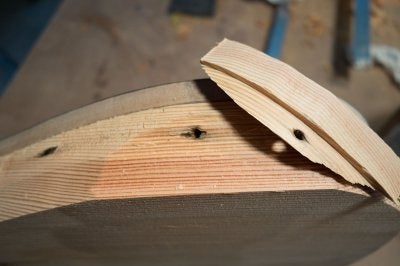cborgman
TDPRI Member
I've built a few bodies and still not very efficient at it, especially the routing part. I'm spending more time changing bits, rigs and taping templates than I am actually routing. So before I go off and buy more bits I might never use I wanted to get some feedback here from the more experienced craftsman.
What's your procedure for routing a body? Mostly the outer profile is what's got my head spinning.
Do you route from the top and take several passes, or on a table and kinda shave off the wood till you get to the template? Do you pre-cut the profile first or go at it the full block and use the remaining wood for router stabilization when going around the horn.
I built a rig to steady the router, works great but is a pain to change bits. In the photo I'm using it with a 2" bit as a planer.

I'm using only reclaimed/recovered/recycled wood and lumber and every body build is a little different so that's not very helpful when trying to be consistent and get as method going.
Would love to know how others are routing!
Thanks.
What's your procedure for routing a body? Mostly the outer profile is what's got my head spinning.
Do you route from the top and take several passes, or on a table and kinda shave off the wood till you get to the template? Do you pre-cut the profile first or go at it the full block and use the remaining wood for router stabilization when going around the horn.
I built a rig to steady the router, works great but is a pain to change bits. In the photo I'm using it with a 2" bit as a planer.
I'm using only reclaimed/recovered/recycled wood and lumber and every body build is a little different so that's not very helpful when trying to be consistent and get as method going.
Would love to know how others are routing!
Thanks.


